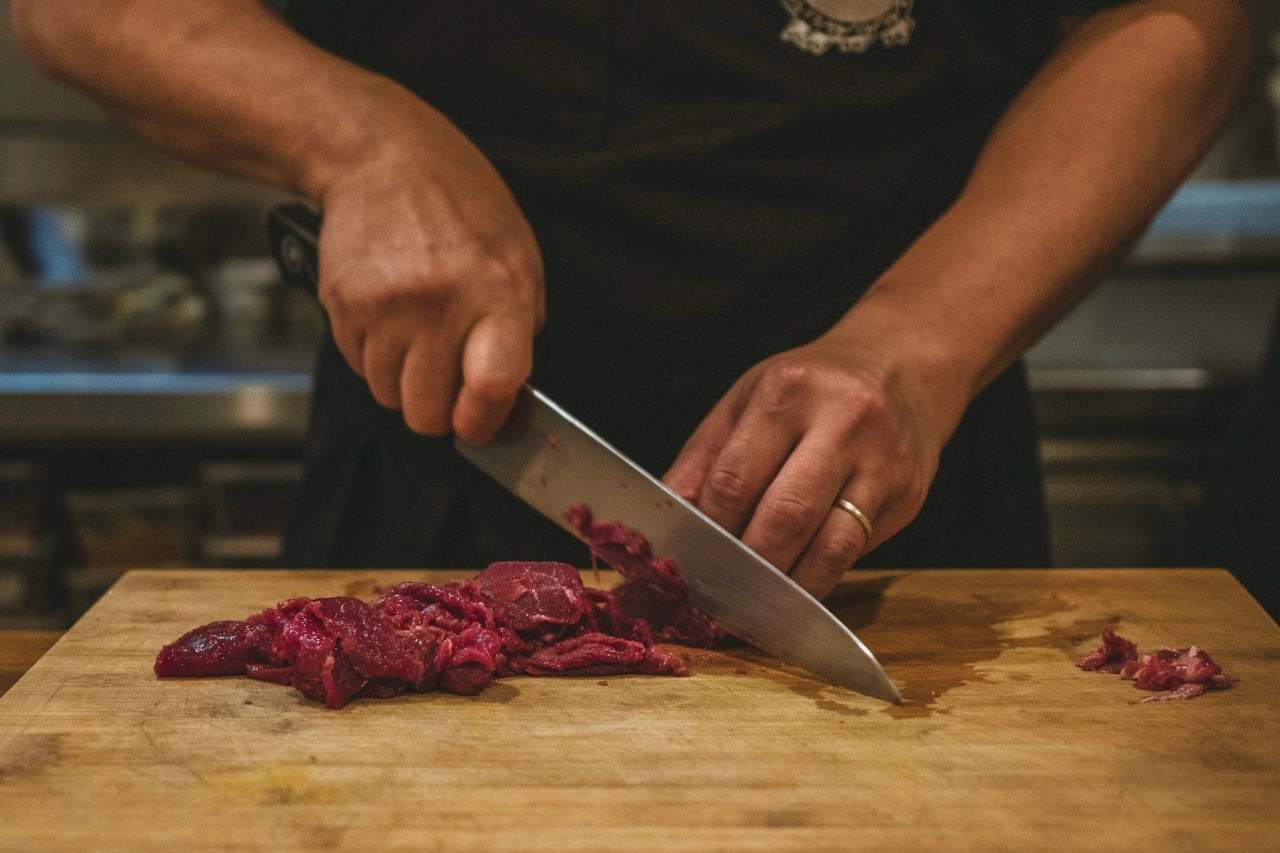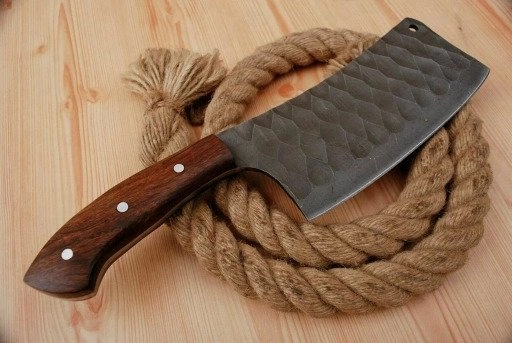Introduction of Butcher Knife
A butcher knife is a type of large, heavy-duty knife that is specifically designed for use in cutting, chopping, and slicing meat. With its thick, sturdy blade and strong handle, a butcher knife is a tool that is both durable and reliable, making it an essential item for any professional or amateur chef who wants to prepare high-quality meat dishes. Whether you're working in a restaurant kitchen, a home kitchen, or a butcher shop, a butcher knife is a must-have tool that can help you achieve precise cuts and perfect results every time.

History of Butcher Knives:
Butcher knives have been used for thousands of years, dating back to the prehistoric era when early humans used sharp stones and bones to hunt and prepare food. As civilization developed, so did the technology and materials used in creating butcher knives. For example, the ancient Egyptians used copper to create early versions of butcher knives, while the Romans preferred iron. Over time, the design of the butcher knife evolved to include a longer blade and a curved tip, which made it easier to cut through large cuts of meat. Today, butcher knives are made from a variety of materials, including stainless steel, carbon steel, and ceramic, and are an essential tool in kitchens and butcher shops around the world.
Importance of butcher knives in cooking:
Butcher knives play a crucial role in cooking, particularly when it comes to preparing meat dishes. They allow chefs to make precise cuts and slices, ensuring that each piece of meat is the right size and shape for cooking. Butcher knives also make it easier to trim excess fat, bone, and gristle from cuts of meat, which can improve the flavor and texture of the final dish. In addition, using a sharp butcher knife can help prevent injuries in the kitchen, as it requires less force and effort to make cuts, reducing the risk of slips and accidents. Whether you're a professional chef or a home cook, having a high-quality butcher knife in your kitchen can help you achieve perfect results every time you cook meat.
Types of Butcher Knives
There are different types of butcher knives for different jobs. The most common ones are:
Cleaver: A big and heavy knife with a rectangular blade that's good for chopping through thick meat and bones.
Boning knife: A narrow and flexible knife with a pointed tip that's great for removing meat from bones, like poultry, fish, and beef.
Chef's knife: A versatile knife that can chop, slice, and dice meat.
Carving knife: A long and thin knife with a pointed tip that's used to slice meat, like roasts, hams, and turkeys.
Steak knife: A small and sharp knife with a serrated edge that's used to cut through cooked meat, like steak or pork chops.
Breaking knife: A strong knife with a curved blade that's used to break down big pieces of meat into smaller cuts.
Skinning knife: A knife with a short and curved blade that's used to remove the skin from the meat, like deer or elk.
Meat cleaver: A lighter version of the traditional cleaver, with a thinner blade that's good for chopping meat, poultry, and vegetables.
Features of a Good Butcher Knife
A good butcher knife should have the following features:
Sharp blade: The blade should be sharp enough to easily cut through meat without applying too much pressure.
Comfortable handle: The handle should be comfortable to hold and provide a secure grip, even when wet.
Durability: The knife should be made from high-quality materials that are strong and durable enough to withstand heavy use.
Balance: The knife should be well-balanced, meaning the weight should be evenly distributed between the blade and handle.
Size: The size of the knife should be appropriate for the task at hand, whether it's chopping through thick cuts of meat or removing bones.
Easy to maintain: The knife should be easy to clean and maintain, with no hard-to-reach areas that could harbor bacteria.
Versatility: A good butcher knife should be versatile enough to handle a variety of cutting tasks, from slicing to dicing to chopping.
How to Choose the Right Butcher Knife
To choose the right butcher knife, follow these simple steps:
Determine your needs: Consider what types of meat you will be cutting and how often you will be using the knife.
Consider the size: Choose a knife that's appropriate for the task at hand. A larger knife may be better for cutting through thicker cuts of meat, while a smaller knife may be better for more delicate work.
Check the blade: Look for a knife with a sharp and durable blade made from high-quality materials.
Consider the handle: Choose a knife with a comfortable and secure grip that fits your hand size.
Check the weight and balance: A good butcher knife should be well-balanced and have a weight that feels comfortable for you.
Consider your budget: Choose a knife that fits within your budget but is still of good quality.
Try before you buy: If possible, try holding the knife and practicing cutting motions to see if it feels comfortable and easy to use.

How to Properly Care for Your Butcher Knife
Proper care of your butcher knife is important to maintain its performance and extend its lifespan. Here are some simple steps to care for your butcher knife:
Clean the knife after each use: Use mild dish soap and warm water to clean the blade and handle. Dry the knife thoroughly before storing it.
Sharpen the knife regularly: A sharp knife is safer and more efficient to use. Use a honing rod or sharpening stone to maintain the sharpness of the blade.
Store the knife properly: Use a knife block, magnetic strip, or sheath to store the knife. Avoid storing the knife in a drawer or with other utensils that could damage the blade.
Avoid cutting hard materials: Do not use your butcher knife to cut through bones, frozen meat, or hard materials like wood or plastic, as this can damage the blade.
Use a cutting board: Always use a cutting board when using your butcher knife. Avoid using hard surfaces like marble or glass, as they can dull the blade.
Don't put it in the dishwasher: Hand wash and dry your knife instead of putting it in the dishwasher, as the high heat and harsh detergents can damage the blade and handle.
Conclusion
In conclusion, a butcher knife is a specialized tool designed for use in the preparation of meat. It is typically larger and heavier than a standard kitchen knife, with a thicker blade that is capable of handling tough cuts of meat. Whether you're a professional chef or a home cook, a good butcher knife is an essential tool for anyone who wants to prepare meat quickly and efficiently.